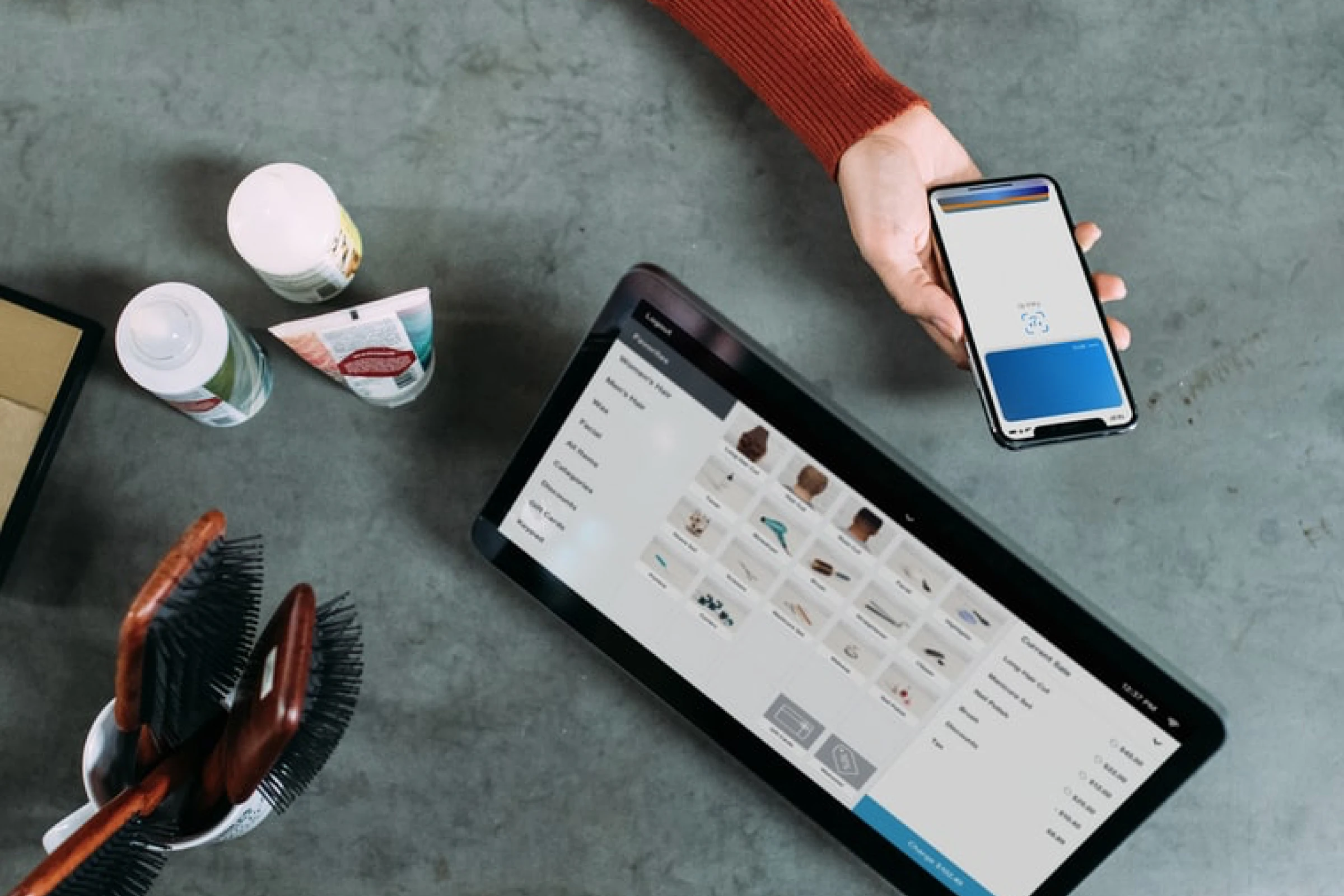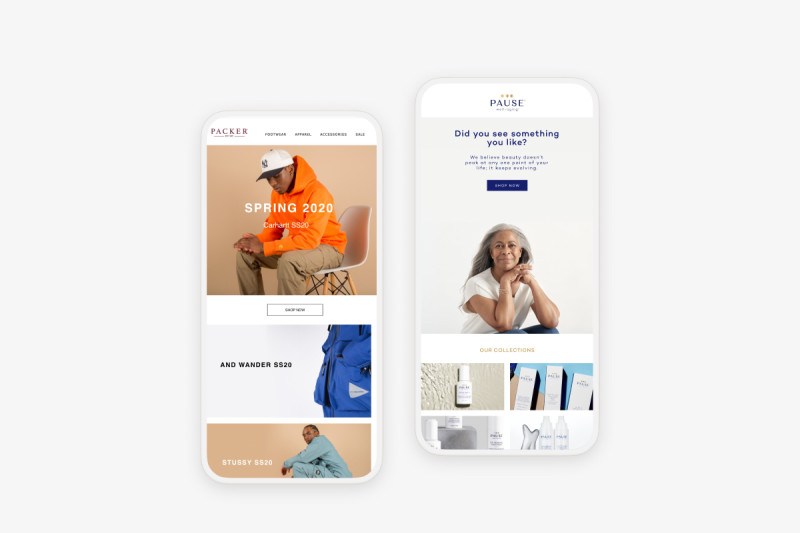What is CX Technology: How Brands Can Leverage Technology to Improve Customer Experience

Quick Summary Customer experience (CX) technology has become a central focus for direct-to-consumer (DTC) brands, whether they are engaging buyers online through e-commerce platforms, fostering seamless in-person customer encounters, or integrating both online and offline experiences.
Customer experience (CX) technology has become a central focus for direct-to-consumer (DTC) brands, whether they are engaging buyers online through e-commerce platforms, fostering seamless in-person customer encounters, or integrating both online and offline experiences.
What is CX? And why is it important?
CX or Customer Experience is how your customers feel about your brand as they go through the customer journey at any touchpoint, whether it's in-store, online, or on social.
The impression and perception customers develop while experiencing your brand impacts customer lifetime value, revenue, and even reputation as a whole.
Companies that prioritized CX were three times more likely than similar companies to have successfully exceeded their top business goals in 2019.
Customer loyalty is highly correlated to CX, which drives two-thirds of customer loyalty, with brand and price trailing behind.
Speed, convenience, helpfulness, and friendly service "matter most" to more than 70 percent of consumers.
Improving CX can lead to substantial financial gains — in the mass-market auto manufacturing sector, for example, a one-point CX improvement can lead to more than $1 billion in additional revenue.
It's easy to understand why a CX focus is a smart approach when considering recent statistics around customer behavior and CX.
E-commerce brands can leverage technology to improve CX throughout the customer journey. We discuss several ways below.
Automation and CX Technology
Customers today have less time and less tolerance for slow, unresponsive customer service. A focus on automation technology can help brands improve CX by improving customer service response times.
Email Automation
A recent HubSpot survey revealed that up to 90 percent of customers consider an "immediate response" to a customer service question as "important" or "very important." And immediate means immediate — 10 minutes or less.
Email automation to address inquiries is a must, especially for brands planning to scale. If you can send a dynamic response as soon as a customer sends an email or contacts you through a form, customers will feel more confident that they will receive a response.
Simple service offerings like automatic order status email updates can also go a long way toward building brand loyalty. Order status automation can also provide a financial benefit - when customers have easy access to order information, they are less likely to need the resources of a customer service team.
Product Return Automation
If you haven't considered your product return process, you may discover that returns can offer an unexpected opportunity for CX improvement. 92 percent of buyers responding to a recent study said they would return to purchase from a brand if returns are easy and hassle-free. Adding automation to the return process can help on both fronts.
Product return automation like behavior-based websites and responsive apps can improve the customer experience. For example, Returnly allows merchants to give instant credit to customers when they make a return. Returnly also enables merchants to issue “returnless refunds” or "green returns" on perishable items and products that can’t be resold, delivering a hassle-free, more eco-friendly experience for the customer.
Customer Service Automation
Poor customer service can have a significant impact on revenue. In the US alone, companies lose $62 billion per year due to bad service. Brands that aren't paying attention to customer service often experience "quiet abandonment" — most customers who are unhappy with a brand simply leave without complaining.
Automated customer service features allow brands to deliver quick, multichannel responsiveness, and in some cases, can provide significant cost savings over other service delivery methods. AI-enhanced chatbots, for example, are expected to save businesses around $8 billion annually by 2022.
Gorgias is a good example of an app that can help retailers streamline the customer service process through smart automation. Gorgias uses machine-learning AI that evolves over time to reduce repetitive support requests, allowing companies to focus on more urgent inquiries. The platform combines helpdesk and AI-enhanced chat features that customers can access from virtually any channel, including SMS.

Multichannel Experience
Ideally, customers should have a consistent experience across a brand's channels. Answers to questions should be the same whether a customer is reaching out to the customer care team, searching the brand's website, or seeking help through a social media channel. Automation can help brands ensure this kind of consistent experience.
Technology like single customer view (SCV) systems can centralize customer data, which helps brands provide a consistent experience across multiple channels. When brands can point their automated chatbots and email tools to a singular source of truth, customers are more likely to experience personalized, consistent service regardless of how they seek customer care.
A robust e-commerce platform can improve CX by streamlining the purchase journey. This is especially true for direct-to-consumer (DTC) brands. For example, when Simmons Bedding launched their first-ever DTC e-commerce experience, the brand focused on creating an intuitive, streamlined customer experience.
It can be challenging for legacy brands like Simmons, but it’s well worth the effort to connect existing retail platforms to newer e-commerce tech.
Email remains a highly effective digital marketing channel, but many brands don't take full advantage of its potential for improving CX. Automated trigger emails can guide users based on customer behavior — think visiting a specific landing page, signing up for your newsletter or back-in-stock notifications, subscribing to a service, or making a pre-order purchase. For example, when a customer subscribes to a service, an automated email can help guide the customer into your onboarding flow with no delay.
Effective e-commerce email marketing campaigns can also produce conversion benefits and enhanced experiences for customers. For example, HUGO BOSS benefits from bright, on-brand email campaigns that feel personalized, engaging, and consistently aligned with the brand's story.
SMS
When it comes to CX, customers prefer text over other communication channels. Around 67 percent of recently surveyed consumers said they would rather text with a business about appointments and scheduling than communicate by email or phone. Almost half of the surveyed customers said they prefer to receive marketing and loyalty communications by text.
A 2017 survey revealed that most customers prefer SMS over other channels for receiving:
- Delivery updates
- Order confirmations
- Promotional coupons
SMS is highly effective – more effective than email – yet, it’s still a relatively untapped marketing medium. Integrating SMS into your customer communications, whether it stands alone or integrates with your email communications, works because your customers prefer it and customers open their text messages and read them more frequently than they do with their emails.
Social
Social networks have become a lucrative income stream for many brands. Customers who regularly engage with these platforms are increasingly likely to make purchases from social media apps and websites.
Brands can add seamless features to their social network channels that guide customers to their websites. YouTube, Instagram, and Facebook are adding tech that allows customers to buy products as they scroll their feeds without leaving the platform. Integrating a shoppable social media feed onto brands’ websites will inspire customers to make a purchase. The user-generated content provides inspiration for how products can be used in real life by real people.

Improve CX Metrics with the Right Tech Tools
Be sure to take advantage of tech tools that help improve CX at every stage of the marketing funnel. These four tools allow brands to utilize customer feedback in new ways, easily add personalization to the CX, and provide fast, automated customer service.
Yotpo
Yotpo allows you to use the potential content generated when users leave product reviews, rate brand experiences, or interact in other ways with your brand. Yotpo "helps brands accelerate growth by enabling advocacy and maximizing customer lifetime value."
Privy
Privy helps brands improve conversion rates through the use of non-invasive pop-up technology. It analyzes user behavior to promote intelligent email capture, upsell/cross-sell, and recapture interest with exit intent targeting. Privy integrates with major e-commerce platforms, including Shopify and Klaviyo, to help companies offer coupons, suggest products, and facilitate email signups.
Nosto
Nosto adds personalization to the customer's experience e-commerce journey. With Nosto’s dynamic content, you can automatically adapt messaging, visuals, layouts, and more so each shopper "feels like they're in an online store made just for them."
Gorgias
Gorgias allows brands to aggregate all their channels and couple it with machine learning to drive efficiencies as well as conversions. Its AI responses can automate up to 15% of repetitive support inquiries and allow brands to allocate your time on more urgent inquiries.
Retailers face a significant challenge in meeting modern buyers' demands. Today, customers both value and expect a good experience when they engage with brands. The most effective CX-enhancement approaches integrate smart, dynamic technology at every opportunity.
Ready to see what your brand can do?
Contact us to see how we can take your brand's CX to the next level.




